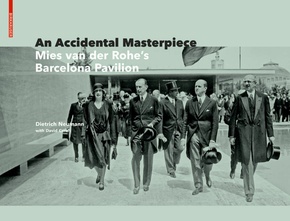An Accidental Masterpiece - Mies van der Rohe's Barcelona Pavilion
| Verlag | Birkhäuser Berlin |
| Auflage | 2020 |
| Seiten | 192 |
| Format | 23,7 x 2,4 x 30,7 cm |
| Gewicht | 1276 g |
| Artikeltyp | Englisches Buch |
| ISBN-10 | 3035619867 |
| EAN | 9783035619867 |
| Bestell-Nr | 03561986A |
Mies van der Rohe entwarf mit dem temporären Ausstellungspavillon des Deutschen Reichs auf der Weltausstellung 1929 in Barcelona eine Ikone der Architektur, aber auch ein umstrittenes Monument der Selbstdarstellung der Weimarer Republik.
Das Gebäude gehört zu den ungewöhnlichsten Erfolgsgeschichten in der Architektur: Trotz seiner kurzen Existenz wuchs sein Ansehen in den folgenden Jahrzehnten stetig, auch dank großartiger Fotografien. Bald galt es als gebautes Manifest der Moderne, ihrer räumlichen und "ideellen" Ambitionen, als "ein Meilenstein der modernen Architektur".
Ausführlich und weitreichend recherchiert, stellt das vorliegende Buch seine komplexe Geschichte und seine politische Verwicklung dar - bis hin zu seiner Rekonstruktion zwischen 1983 und 1986 nach den Originalplänen am ursprünglichen Ort.
The Complex History of a Building
With the temporary exhibition pavilion of the German Reich at the 1929 International Exposition in Barcelona, Mies van der Rohe designed an architectural icon, but also a controversial monument of the way the Weimar Republic portrayed itself.
The building is one of the most unusual success stories in the history of architecture: Despite its short existence, its reputation grew steadily in the following decades, thanks in part to magnificent photographs. It was soon considered the constructed manifesto of the Modern Age, and its spatial and "ideational" ambitions were called "a milestone of Modern architecture."
This comprehensively, broadly researched book portrays the building's complex history and its political entanglement-up to and including its reconstruction according to van der Rohe's plans at the original site between 1983 and 1986.
Presumably the most important and influential architectural icon o f the 20th century, uniquely documented and depicted On the occasion of the 50th anniversary of Mies' death and the Bauhaus centenary Many never before published photographs from archives in the US, Germany and Spain

